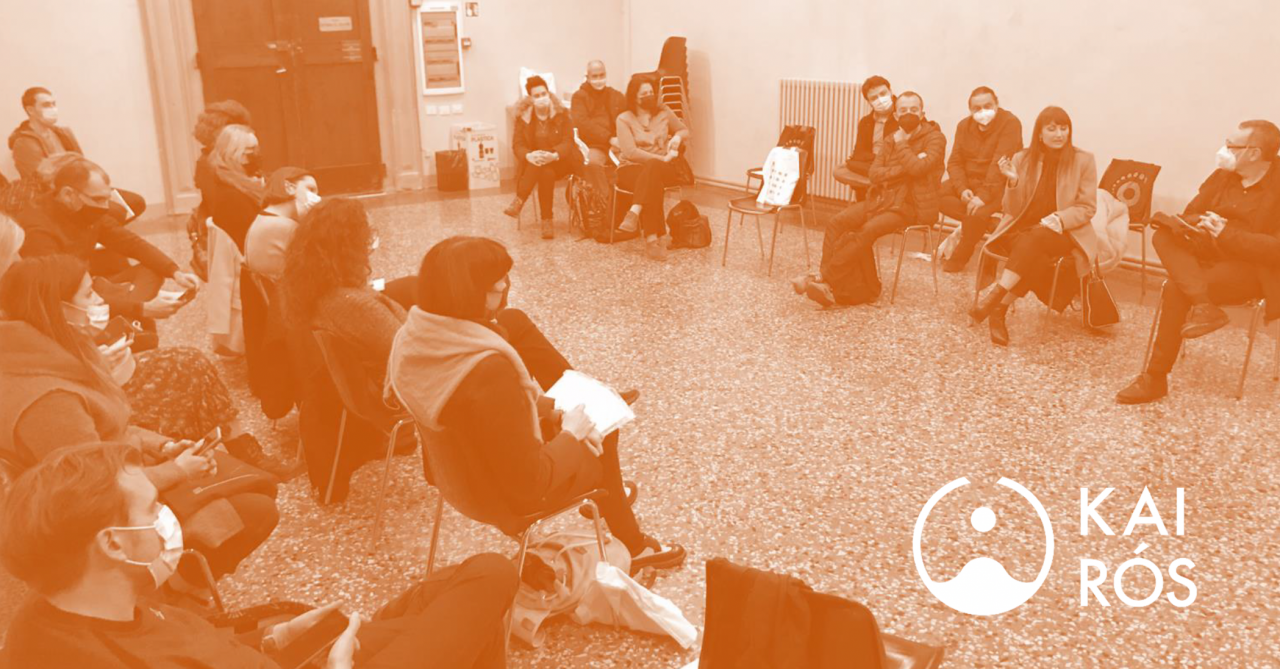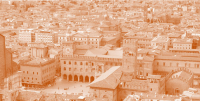
Bologna is more and more widely acknowledged as a benchmark in the field of heritage-driven urban development and regeneration. Against this background, the Municipality of Bologna gently organised a one-day study visit for a KAIRÓS international delegation in November 2021. The selection of spots and the explanations taken from the different hosts stressed a good number of insights that can be synthesised in numerous main lessons, summarised in this article by KAIRÓS Lead Expert Miguel Rivas.
A social-driven approach to cultural heritage valorisation.
As a sort of (implicit) pre-condition, the Municipality of Bologna has assumed a broad understanding of cultural heritage valorisation, and in this assumption promoting a new social accessibility is key —it is not by chance the city pioneered in the regulation of the urban commons. This social-oriented approach has the effect of expanding the portfolio of heritage valorisation projects in the city, and it is key to build up a relevant city perspective to cultural heritage.
Urban regeneration as means for sustainability.
According to Fondazione per l’Innovazione Urbana ”urban regeneration means reorganizing and improving the city, whether it is former industrial areas, historic centers or abandoned peripheries, developing new urban uses and functions without new land consumption, responding to new cultural and social needs within a sustainable economic regeneration framework.” The concept is therefore quite instrumental in today´s efforts towards the compact city, and that is why heritage-led urban regeneration matters for sustainable urban development.
This is not about the historic centre only.
As a result of the above, non-central located heritage valorisation and heritage-driven urban regeneration can or should be promoted as well. That is the case for Villa Aldini, an abandoned Napoleonic mansion on the city hills, which is the subject of a major regeneration and adaptive reuse project, and that of DumBO (Distretto urbano multifunzionale di Bologna) former railway premises outside Bologna´s quadrilatero which is now being re-developed as a creative hotspot.
Take time to experiment.
The decision to regenerate Villa Aldini and give it new value for the city is firm and has no way back, but they are not in a hurry. They are now in a sort of initial stage of experimentation to find out how the place (both indoor and outdoor areas) can be best appropriated and used. To that aim, the mansion is being offered to temporary cultural events and residence for artists, like Archivio Zeta theatre company. It is like a “consultation to the market”, in order to give a more solid base to the adaptive reuse project.
Such experimental aim was at the heart of ROCK, a 10.5 M€ transnational project led by Bologna from 2016 to 2020, with a focus on the historic centre, in the area around Via Zamboni. Some “tactical urbanism” type of interventions were rolled out at the time, with the aim to get some historic squares free of the massive car occupation, were so enthusiastically welcome by the people and the local media, that were turned into permanent and scaled up to other historic districts. Stakeholders other than the Municipality, like Bologna Opera House, were also involved in experimental actions and proofs of concepts to broaden the social usability of cultural heritage.
Municipality and University working hand in hand.
Indeed, the ROCK project and to some extent the aforementioned experimental approach lie on a close working relationship between the Comune di Bologona and Alma Mater Studiorum - Università di Bologna, notably the Department of Architecture. Both have founded the Fondazione per l'Innovazione Urbana (FIU) as a centre for research, participation and communication on Bologna´s current urban dynamics. FIU has provided theoretical basis and direction on heritage-led urban regeneration.

Mobilising stakeholders makes a difference.
It is just about making the most of a multi-stakeholder environment in advanced western societies. Just two examples. To provide direction and backing to Villa Aldini´s regeneration and adaptive reuse project, a working group has been set up, involving the Municipality, the University of Bologna, Villa Ghigi Foundation, the Foundation for Urban Innovation, Cineteca Foundation, Teatro Comunale, the Metropolitan Authority, the Emilia-Romagna Region and the Ministry of Culture, together with the contribution of residents. IncrediBOL! is a successful programme of the Municipality of Bologna on entrepreneurship in the creative-digital sectors, where heritage applications are playing a significant role. And we were reported this programme is supported by 26 institutional partners!
One might say this is sophisticated governance, but it simply is the easiest way to make an impact. Moreover, in Bologna they benefit from Emilia Romagna´ strong civic traditions, as described in the seminal “Making Democracy Work” by Robert D. Putnam (1993).
City-to-region alignment.
In promoting cultural heritage as a driver for growth and sustainable development, the Municipality of Bologna is not alone. For instance, Emilia-Romagna is one of the few regions in the EU with a concrete and powerful vision on how to link cultural heritage to the innovation policy, in particular the smart specialisation strategies. It is not by chance that Bologna is home to a variety of firms and start-ups which are disrupting the heritage management field, ranging from place-sensitive lighting solutions —e.g. Viabizzuno— to immersive technologies to experience heritage differently —e.g. Apparati Effimeri. Furthermore, in Italy, like in other decentralized countries, a sound city-to-region articulation means getting access to significant funding, which is absolutely key in urban regeneration. Many of the initiatives we visited were sourced by Emilia-Romagna´s Operational Programme.
The power of good communications.
Like funding, showcasing and good communications matter as well. The brand new permanent exhibition about Bologna´s urban transformations and flagships projects, including heritage-driven regeneration, is amazing. Curated by FIU, located in the heart of the city in piazza Maggiore, and supported by cutting-edge technologies on visualisation and interaction from the local start up ecosystem, the exhibition is called to become a landmark to visitors and locals alike.
Miguel Rivas
URBACT Lead Expert for the KAIRÓS project

